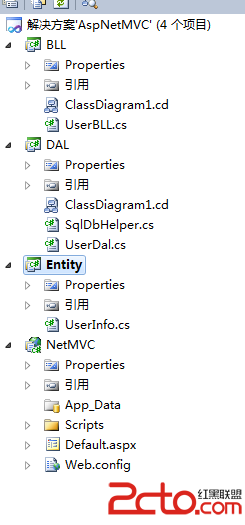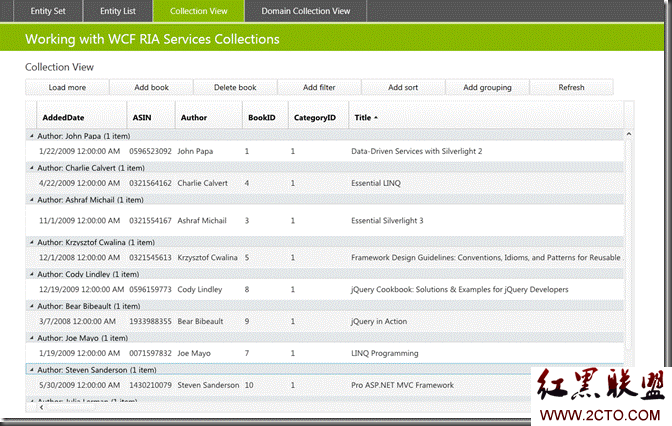当前位置:编程学习 > asp >>
答案:If you administrate a web server on a remote machine, then you know how important it can be to be able to quickly view your event logs and "check on things" Until recently, the only way to do this was to log onto the machine via Terminal Services, VNC or PC Anywhere, log onto the desktop, and bring up event viewer that way. Or, you could use somebody's component.
Fortunately,. the Windows Management Instrumentation (WMI) interface has become so sophisticated -- and scriptable -- that we can now do all this using these scripting interfaces in an ASP page. Not only that, but we can make things a lot easier by creating a form - based query interface that lets you enter search terms to get back only what you need to see.
The key to all this is an implementation of the Desktop Management Task Force's (DMTF) Web-Based Enterprise Management (WBEM) initiative for Microsoft® Windows platforms that extends the Common Information Model (CIM) to represent management objects in Windows management environments. The Common Information Model, also a DMTF standard, is an extensible data model for logically organizing management objects in a consistent, unified manner in a managed environment. It provides:
A rich query language that enables detailed queries of the information model.
A scriptable API that developers can use to create management applications. The scripting API supports several languages, including Microsoft Visual Basic®; Visual Basic for Applications (VBA); Visual Basic, Scripting Edition (VBScript); Microsoft JScript® development software. Besides VBScript and JScript, developers can use any scripting language implementation that supports Microsoft's ActiveX® Scripting technologies with this API (for example, a Perl scripting engine). Additionally, you can use the Windows Scripting Host or Microsoft Internet Explorer to run scripts utilizing this interface. Windows Scripting Host, like Internet Explorer, serves as a controller engine of ActiveX scripting engines. Windows Scripting Host supports scripts written in VBScript and JScript.
What we'll do here is use the scripting interface to write an ASP web page that can be loaded from the IIS machine just like any web page, and that allows us to view and search the Event Logs:
<%
' Event Log Reader by Peter A Bromberg
' In our first script block, we simply check to see if the form has been submitted. If so, we instantiate the Wscript.Network object to
' get an instance of the computer name, and display it
if Request.Form("SUBMIT") = "" then
set oNet =CreateObject("WScript.Network")
compname=oNet.Computername
Response.write "<BASEFONT FACE=Verdana>"
Response.write "Viewing: " & compname & "<BR>"
set oNet = Nothing
%>
<!-- the form wasn't submitted, so let's display it for the user...-->
<FORM ACTION =eventLog.asp METHOD=POST>
<Table cellpadding=2 cellspacing=2 border=0>
<TR><TD>
<input type=text name=cn value=<%=compname%>></TD><TD>computer name</td></TR>
<TR><TD><select name=LF>
<option value=application>application</option>
<option value=system>system</option>
<option value=security>security</option>
</select></TD><TD>Log File</TD></TR>
<TR><TD><input type =text name=s></TD><TD>Event Source</TD></TR>
<TR><TD><select name=t>
<option value=>ALL</option>
<option value=information>information</option>
<option value=warning>warning</option>
<option value=error>error</option>
</select></TD><TD>Type</TD></TR>
<TR><TD><input type=text name=e></TD><TD>Event Code</TD></TR>
<TR><TD><input type=text name=u></TD><TD>UserName</TD></TR>
<TR><TD><input type=password name=p></TD><TD>Password</TD></TR>
<TR><TD COLSPAN=2 Align=center><input type=SUBMIT NAME=SUBMIT VALUE=CHECK></TD></TR>
</TABLE>
</FORM>
<%
' The form was submitted, so let's do our processing of the user's query..
else
'Declare and initialize the variables we need...
Dim wmiServices, wmiResultSet, wmiRecord
Dim strComputer, strLogfile, strWqlQuery
Dim dtDate, dtTime
set oNet =CreateObject("WScript.Network")
set wmiLocator = CreateObject("WbemScripting.SWbemLocator")
strComputer = oNet.ComputerName
' create the base query, and add the user's selections to the query string ...
strWqlQuery = "SELECT * FROM Win32_NTLogEvent WHERE Logfile="
If(Request.Form("cn") <> "") Then strComputer = Request.Form("cn")
If(Request.Form("LF")<> "") Then strLogfile = Request.Form("LF")
strWqlQuery = strWqlQuery & """" & strLogfile & """"
If(Request.Form("s")<> "") Then strWqlQuery = strWqlQuery & " AND SourceName=" & """" & Request.Form("s") & """"
If(Request.Form("t") <>"") Then strWqlQuery = strWqlQuery & " AND Type=" & """" & Request.Form("t") & """"
If(Request.Form("e") <>"") Then strWqlQuery = strWqlQuery & " AND EventCode=" & """" & Request.Form("e") & """"
' Connect to the default machine, or optionally to another machine and accept username and pasword
if Request.form("u") <> "" then
Set wmiServices = wmiLocator.ConnectServer(strComputer , "root\default", Request.form("u"), Request.Form("p"))
else
Set wmiServices = wmiLocator.ConnectServer(strComputer )
end if
' Execute our WMI query...
Set wmiResultSet = wmiServices.ExecQuery(strWqlQuery)
If(wmiResultSet.Count = 0) Then
Response.write "<b>Query: """ & strWqlQuery & """ returned 0 records.</b>"
Else
' Display the results in a nice table..
Response.write "<Table Cellspacing=2 cellpadding=2 border=0 style=""font-face:tahoma; font-size:9pt;"">"
Response.write "<TR bgcolor=lightblue style=""font-face:tahoma; font-size:9pt;""><TH>Rec</TH><TH>Type</TH><TH>Date</TH><TH>Time</TH><TH>Source</TH><TH>Category</TH><TH>Cat Strg</TH><TH>Event</TH><TH>Usr</TH><TH>Computer</TH><TH>Msg</TH></TR>"
For Each wmiRecord In wmiResultSet
dtDate = CWmiDate(wmiRecord.TimeGenerated)
dtTime = CWmiTime(wmiRecord.TimeGenerated)
i = i +1
if i mod 2 = 0 then
response.write "<TR BGCOLOR=#ffcc66>"
else
response.write "<TR BGCOLOR=lightgrey>"
end if
response.write "<TD>" & wmiRecord.RecordNumber &" </TD>" & _
"<TD>" & wmiRecord.Type & "</TD>" & _
"<TD>" & dtDate & "</TD>" & _
"<TD>" & dtTime & "</TD>" & _
"<TD>" & wmiRecord.SourceName & "</TD>" & _
"<TD>" & wmiRecord.Category & "</TD>" & _
"<TD>" & wmiRecord.CategoryString & "</TD>" & _
"<
上一个:验证码的程序及原理, 看需要的人很多,就贴出来,希望进精华备查
下一个:asp中利用数组实现数据库记录的批量录入方法(原创),有演示,建议入精华
- 更多asp疑问解答:
- asp正则过滤重复字符串的代码
- 用asp过滤全部html但保留br类似的符号
- 会asp,但感觉asp要过点,想学php。但我一般做的都是小公司的站,用access数
- PHP的空间可以用ASP的源代码吗?
- 以前做asp程序,现在应该怎样发展?是学.net还是php
- 以前做asp程序,现在应该怎样发展?是学.net还是php
- 想做一个市级的人才网acess,sql数据库,语言asp,jsp,php分别用哪种好
- jsp,asp,php 区别
- 我想找一个有比较多漏洞的网站的源码,比如可以asp,php注入等都可以。供学习研究用。请提供下载地址。。
- 现在候找人做个网站,用ASP,还是PHP语言去做好
- asp,php ,jsp,.net 对于做网站前台的重要吗?
- asp和php的区别是什么?
- 我是新手SEO菜鸟 请问wp dw php asp cms myspl dede 这些软件应该如何区分呀?
- 网页制作相关的三种语言:ASP JSP PHP那个好点,简单点?
- 网页制作相关的三种语言:ASP JSP PHP那个好点,简单点?





